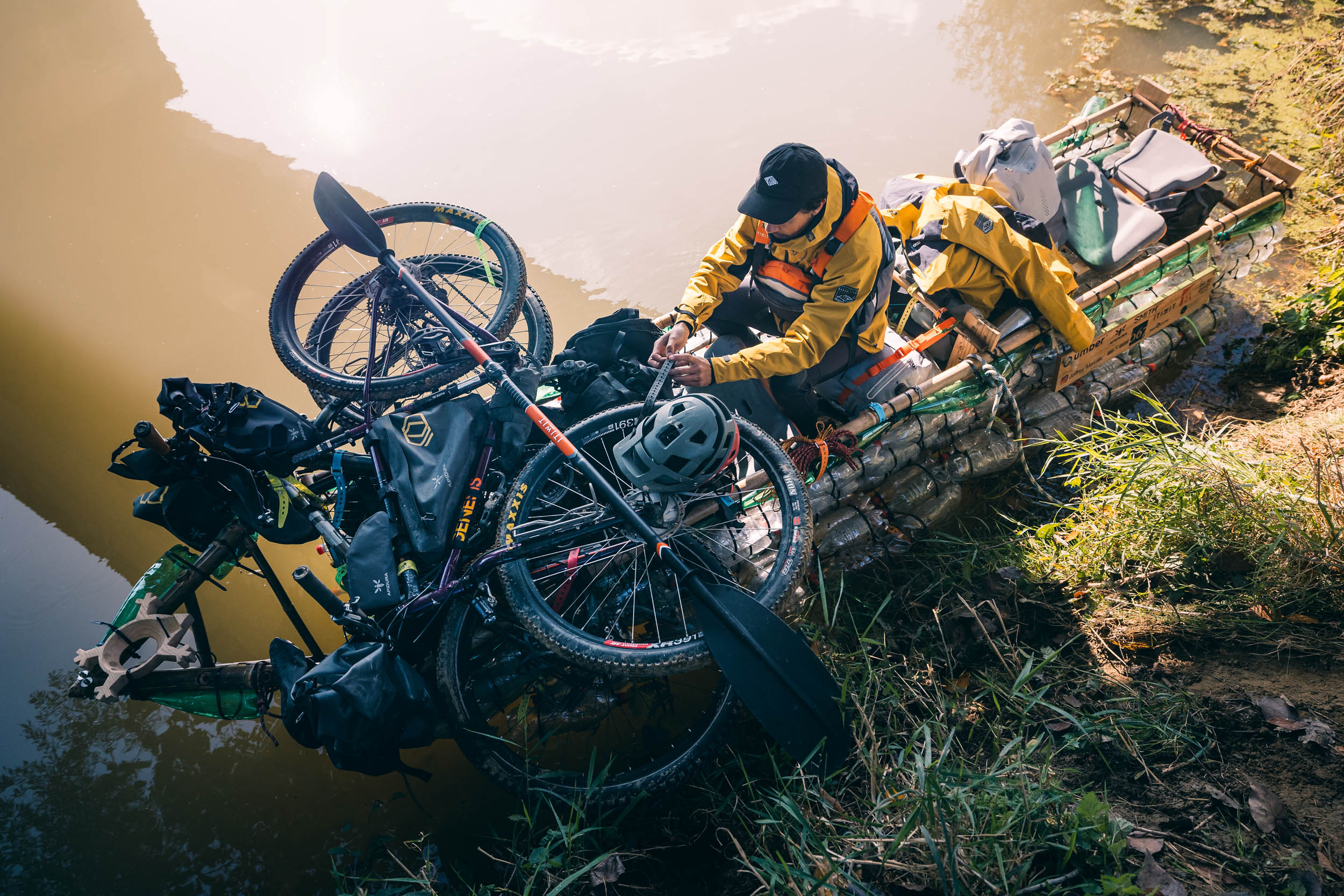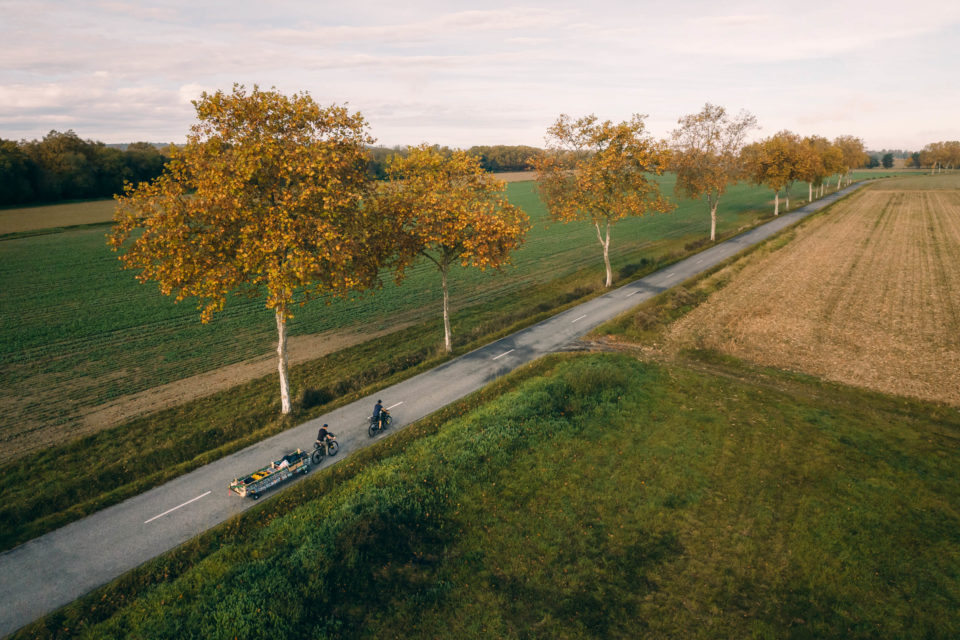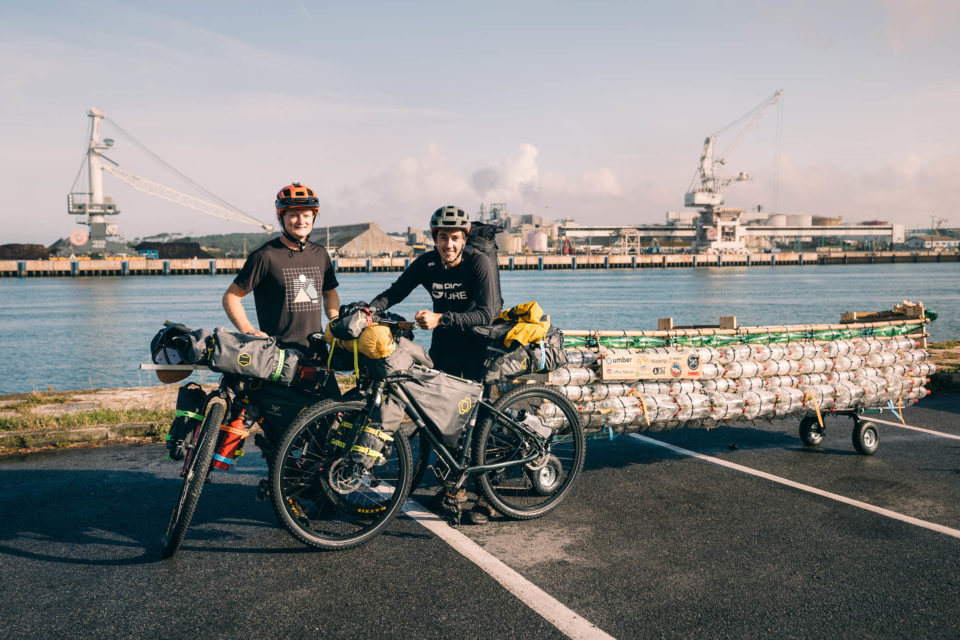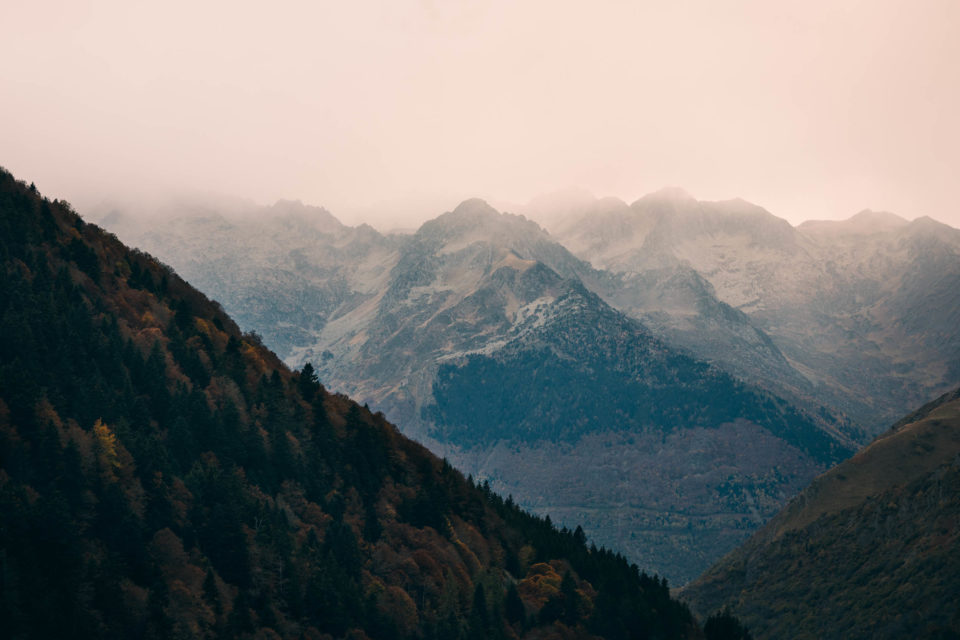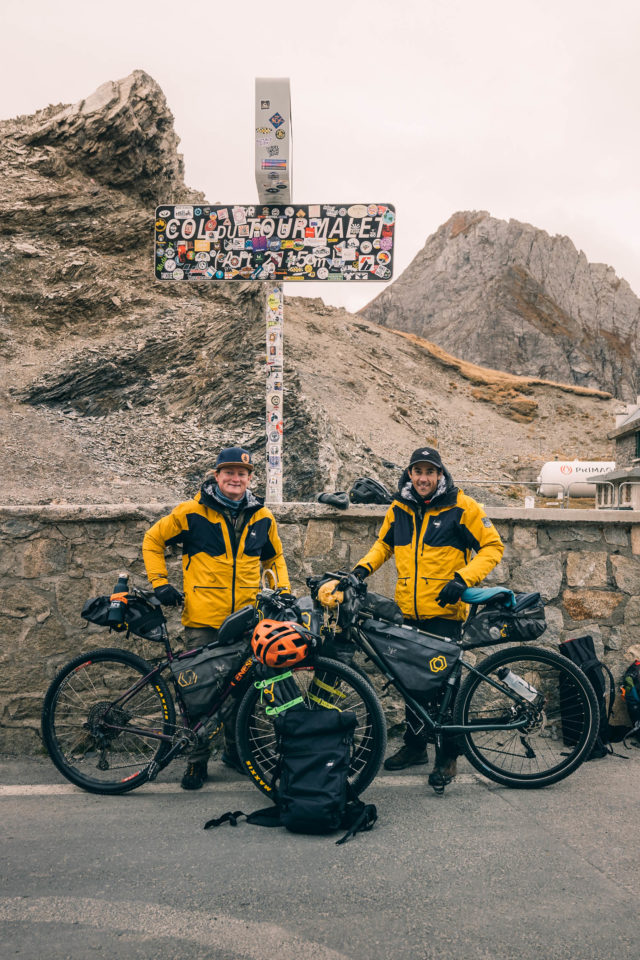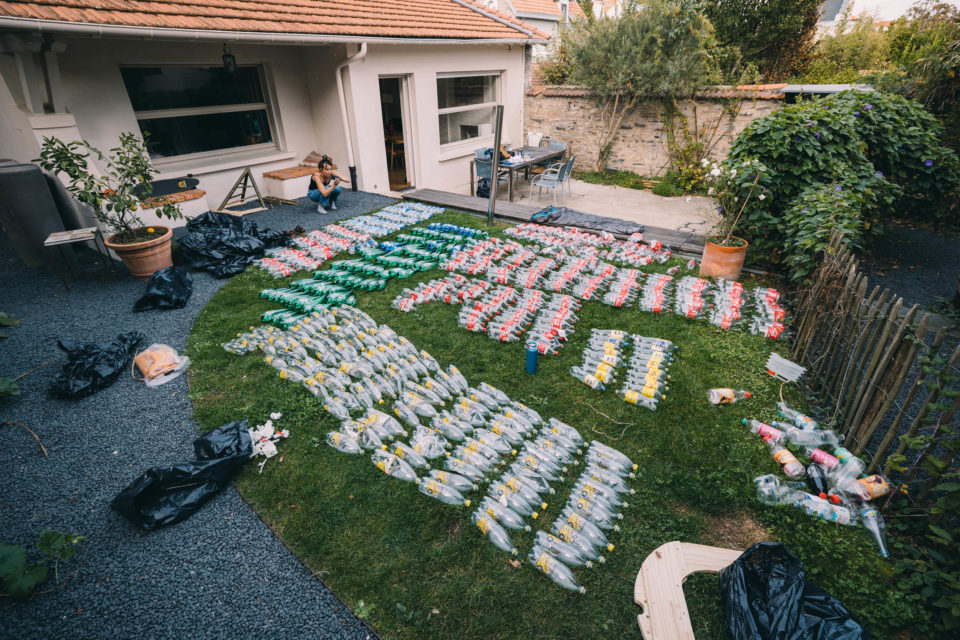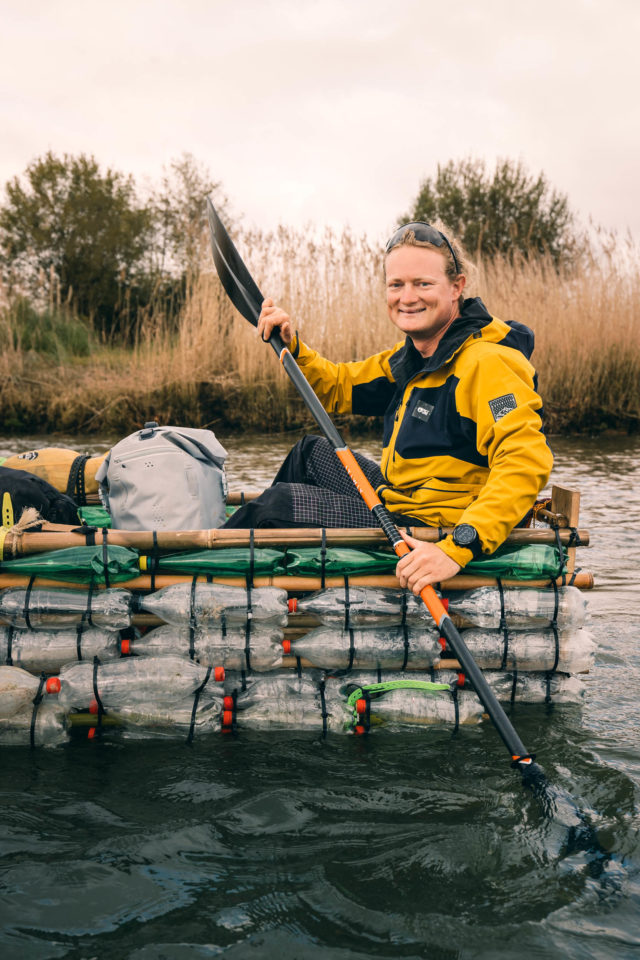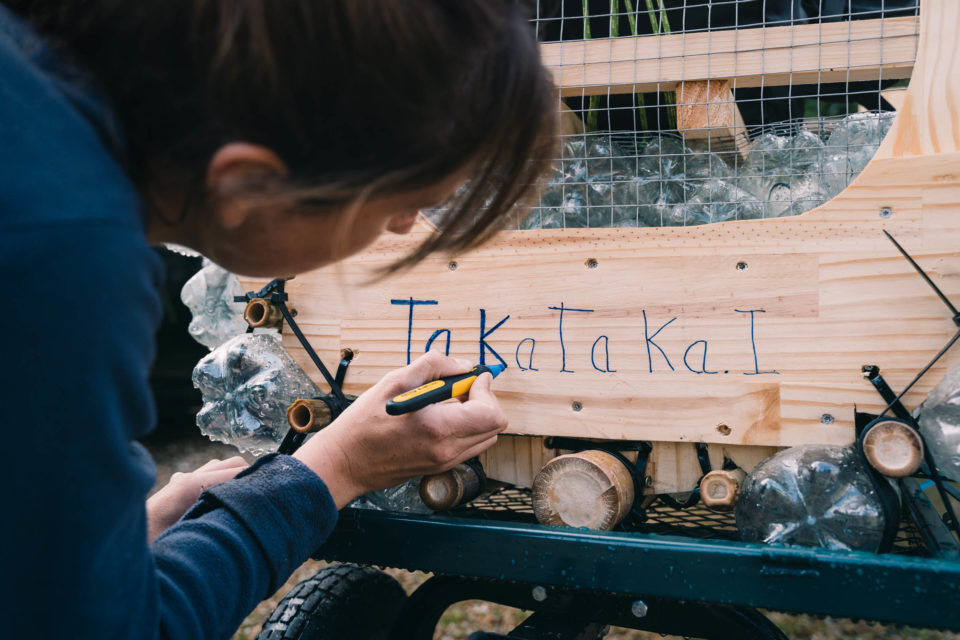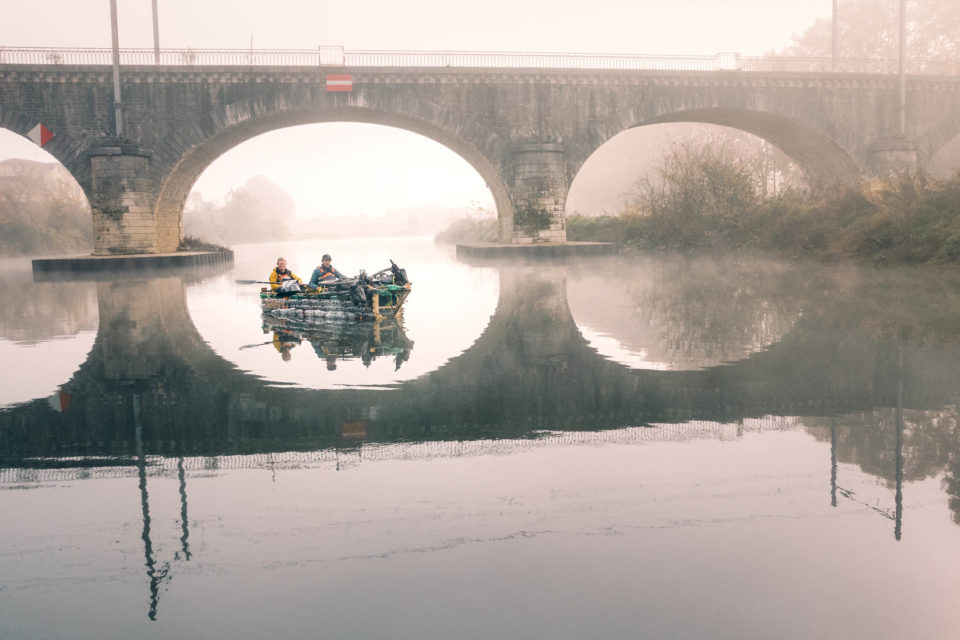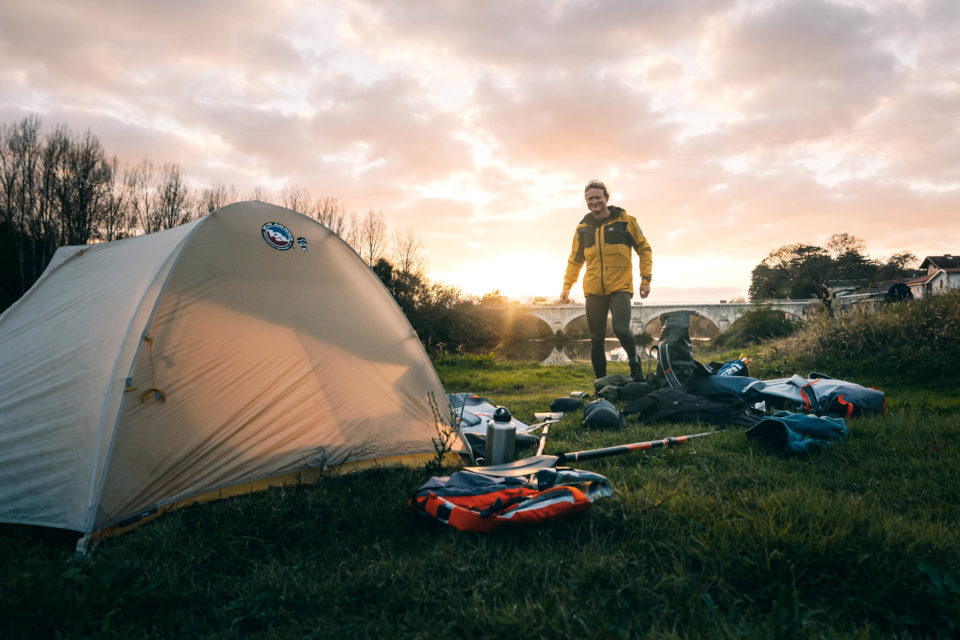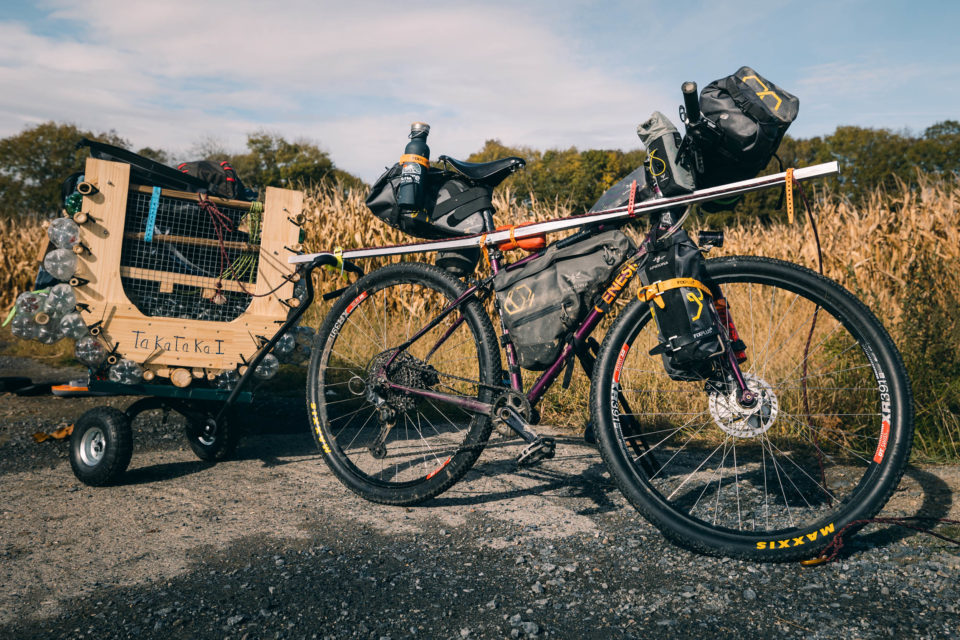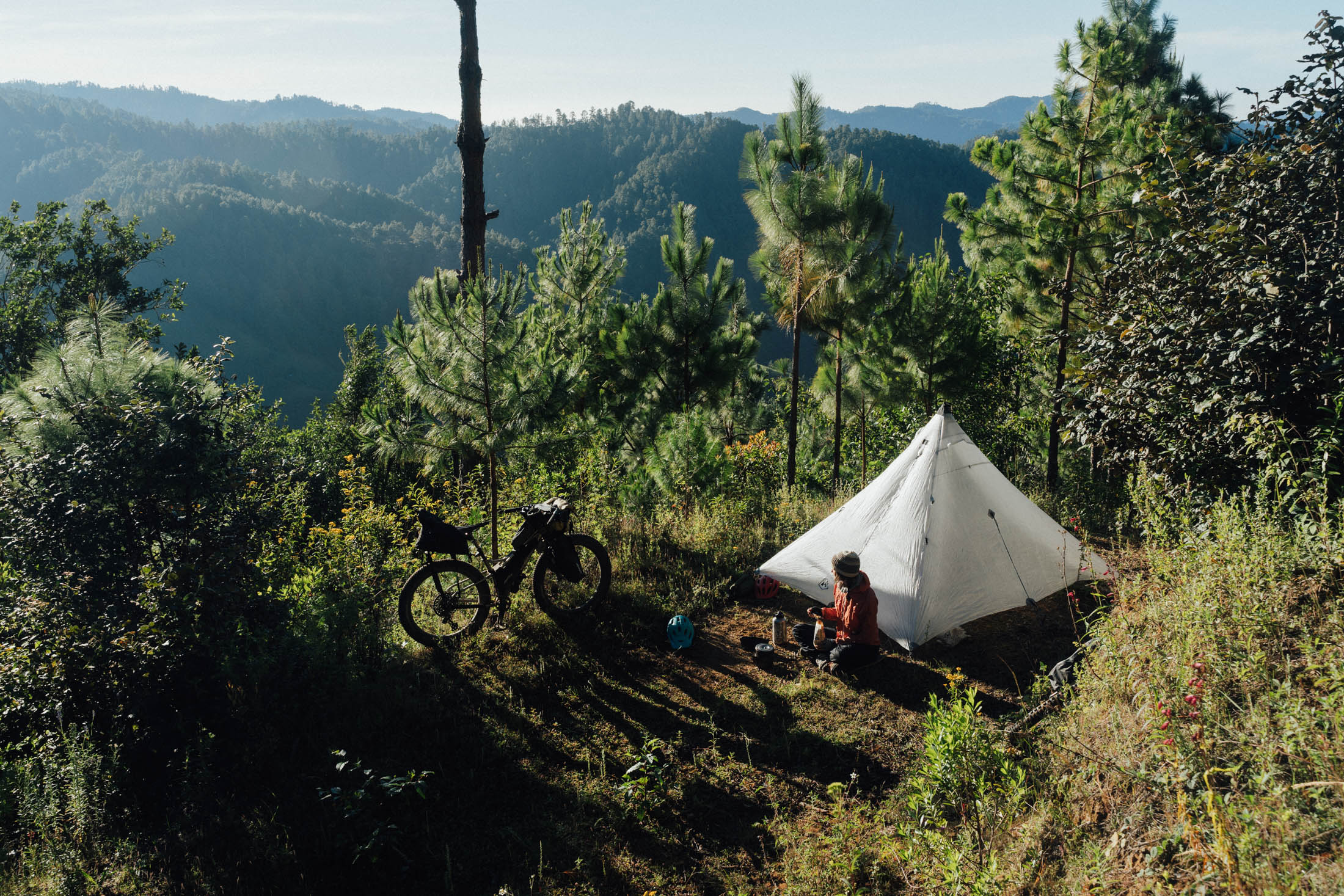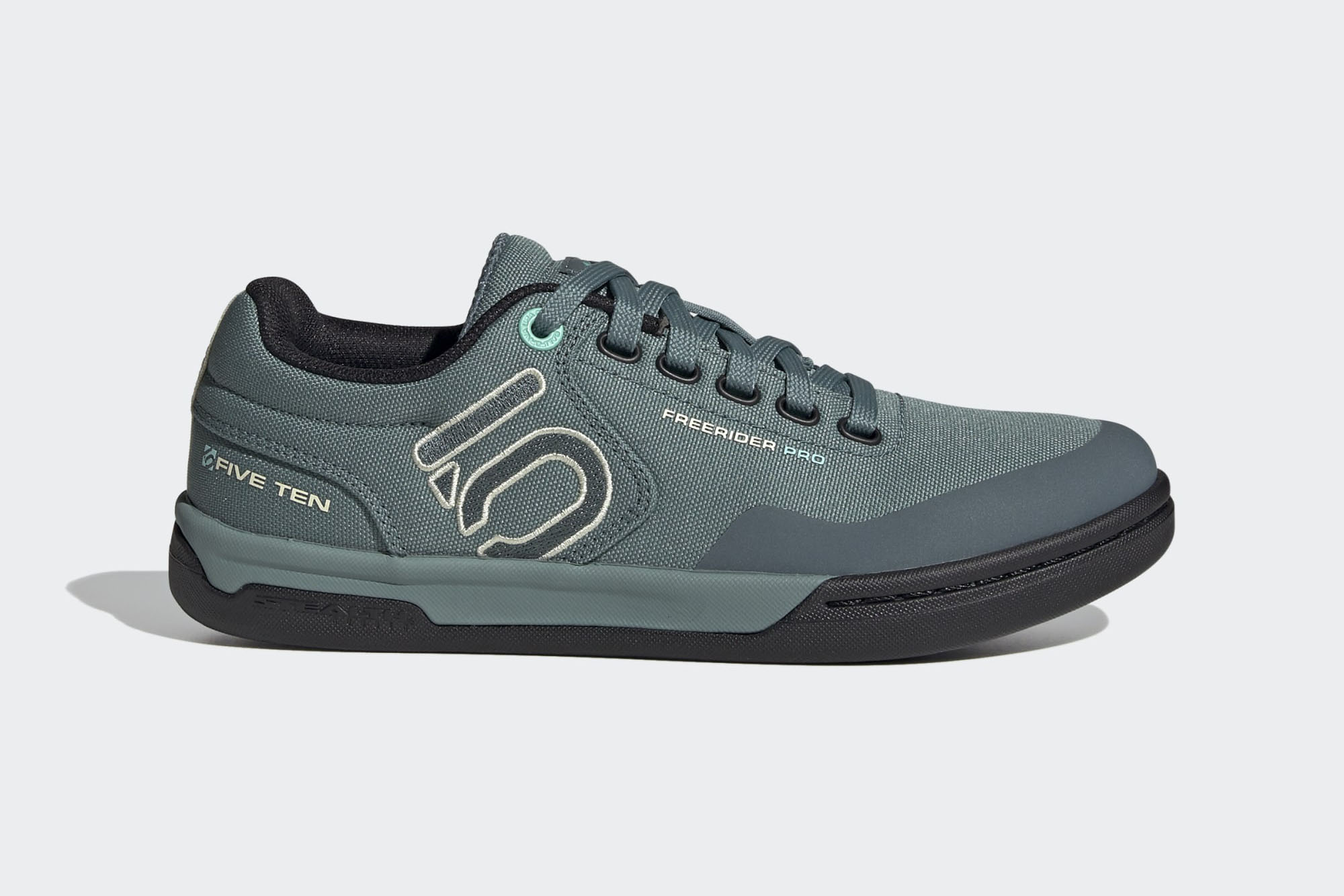Plastiqu’Adour (Film)
Share This
Joffrey Maluski and Loïc Forques used bikes to tow a boat made from plastic bottles and bamboo to the source of the Adour River in France, then paddled it to the ocean on the same river to retrace the journey of plastic waste. Find the new video documenting their trip and our interview with Joffrey here…
From October 26th to November 13th, Joffrey Maluski and Loïc Forques cycled and towed a boat constructed from bamboo and 600 plastic bottles from Biarritz to Tarbes, France. The two then cycled up to the Col du Tourmalet, the source of the Adour River in the French Pyrenees, and returned to paddle the river to the ocean at Anglet. The goal was to retrace the waste cycle from the mountains to the ocean and showcase the power of backyard adventures. Watch the film below, then scroll down for a short interview with Joffrey and a selection of photos from the trip.
What’s the name of this project and what inspired you to take on such an unorthodox trip?
Our project is called Plastiqu’Adour. The idea came from a mix of ideas between me, as I’d just returned from a three-month bikepacking trip in Iceland, and Loïc, who sailed for four weeks around Lake Victoria in Africa aboard a dhow made entirely from recycled plastic (The Flip Flopi expedition) last March with the aim of meeting African schoolchildren, politicians, and communities to raise awareness about the use of plastic, its excessive consumption, and the need to recycle it.
What were the goals of the project and how have they come to fruition?
Our goal in this expedition was to use the audiovisual media as a means of raising awareness on plastic pollution coming from the mountains and ending in the ocean while showing that adventures can happen close to home.
How’d you plan your route and what was the inspiration behind it?
We chose the Adour River because, like any river, it’s polluted by plastic. It’s also a strategic and emblematic place in France to embody the waste cycle from the mountains to the ocean. We were inspired by the Water Family, an association recognized in the Basque Country, which was already been using this route to raise awareness about environmental protection and the preservation of resources.
How did you design the boat? What were the challenges in making it?
This boat was our first prototype. We found some inspiration and examples of what’s already been done on the internet. We had some concerns about its robustness, stability, and handling, but in the end, it floated very well. It’s stable but a bit too heavy and not really manoeuverable.

Was there any significance to the number of bottles you used (600) and the size of the boat?
We used 600 bottles, all collected in three hours at a local event. This number highlights the still excessive use of single-use plastic bottles. Through this boat, these 600 bottles help show how much single-use plastic is out there, how long it sticks around, and that this mode of consumption makes no sense.
The boat is 3.8 meters long, so we have enough space to put the bike on the front and all our stuff inside. If there’s a next one, it will be smaller to reduce the weight as much as possible, even if it means having less space and comfort on the boat. In the end, that would have made the trip much easier.
How much did it weigh, and were there any issues in towing it or portaging it?
The boat was around 80 kilograms empty, and more or less 250 kilograms including us. We had lots of dams and dikes to cross and some parts with a low water-level and big rocks. So, it was difficult at times, and we typically had to take all the stuff out, manage the boat through the difficulties, and pack everything back inside.
Our trailer was not very reliable, especially the tires, which wore out very quickly and end up bursting under the weight of the boat.
What’s behind the boat’s name, Takataka.I?
Takataka means “trash” in Swahili. It’s a little wink and inspired by the Loïc’s expedition in Africa with The Flip Flopi, the first boat we’re aware of that was made entirely from plastic waste.
What was your favorite part of the trip? Any stories or vignettes to share?
Actually, I like when it gets a bit silly and challenging, so, as with the river crossing on the Icelandic trip, managing the boat through the rapids was a highlight of the trip. Unfortunately, we ended up into the river and capsized the boat in a sketchy section. The river got narrow, we gained a little speed, and soon a sudden 90° turn to the right was necessary. We prepared to paddle, but it was impossible to negotiate the turn with such a boat, and we went straight in the brambles and the boat capsized. We were both in the water with a 150-kilogram boat overturned. We somehow end up flipping it back over and kept going. All of our stuff was well secured, and we recovered a paddle and a water bottle a little further on. It was a small fright, but it all ended well. From then on, we tried to be better about understanding and anticipating big turns.
We were soaked from head to toe, a little cold, and more than four kilometres away from Grenade sur Adour, where we planned to stop. Once we arrived, we moored the boat at a kayak club. With no one on the horizon, we dried our stuff. Then Jean, an 87-year-old founding member of the club, arrived and asked us about the project. The idea seems great to him, he opened his club to us with open arms and gave us the keys to sleep in the warmth. Eric, the club’s president, and other members curious to see the boat followed. A family from the club invited us to eat at their place, too. The next day, the club offered us a kayak trip and an animation with the club’s children. Our best memory will remain the spontaneity and kindness of the people there. Our most difficult day ended with some wonderful encounters that we’ll never forget.
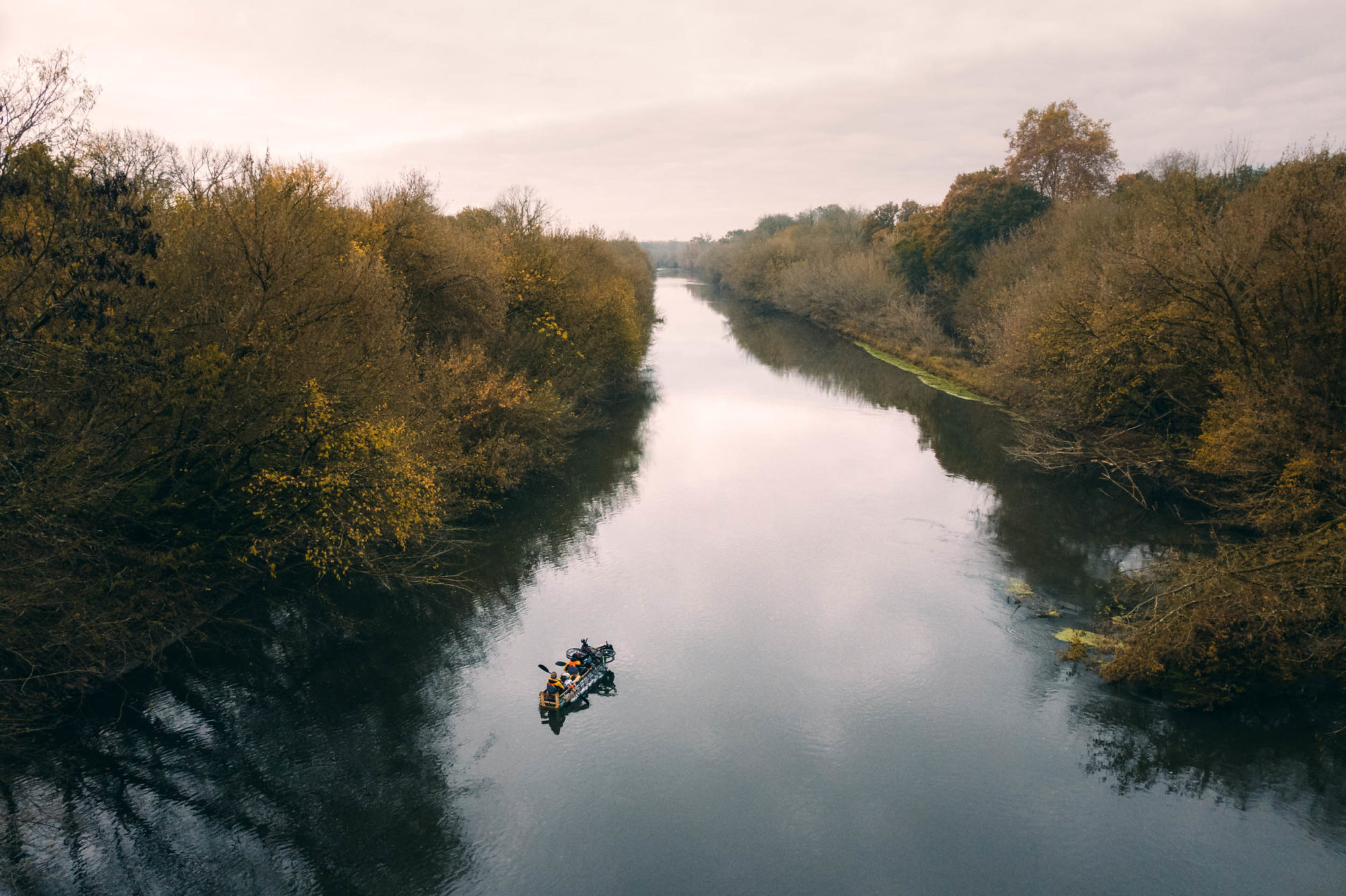
What do you think needs to happen for society to reduce the use of plastics? Has your view changed or evolved since working on this project?
We should re-think, re-use, and recycle as much as we can. Through this adventure, we really want people to reconsider our way of consumption and highlight the banning of single use of plastic in our daily habits. Through this boat, we also wanted to connect people to the broader issue of plastic waste—as it’s a worldwide problem—and make them realize that we can all contribute in our own way and control our contributions to the “waste cycle.”
Lastly, is there anyone you’d like to thank?
Huge thanks to all the people we met on the road. They were really nice with us and a great help on this expedition. We’ve also been really happy to work with different brands, key local actors around the Basque country association, public organizations, and people.
Related Content
Make sure to dig into these related articles for more info...
Please keep the conversation civil, constructive, and inclusive, or your comment will be removed.






